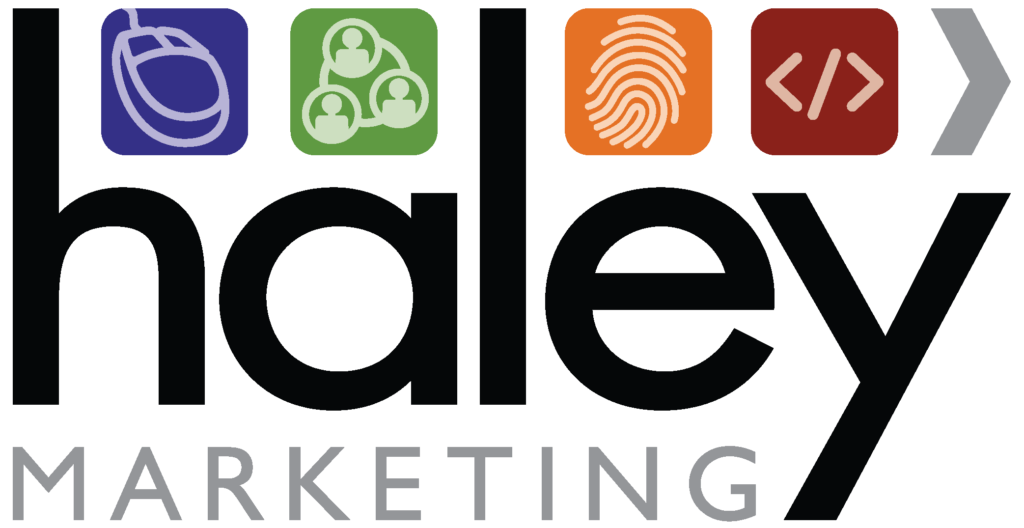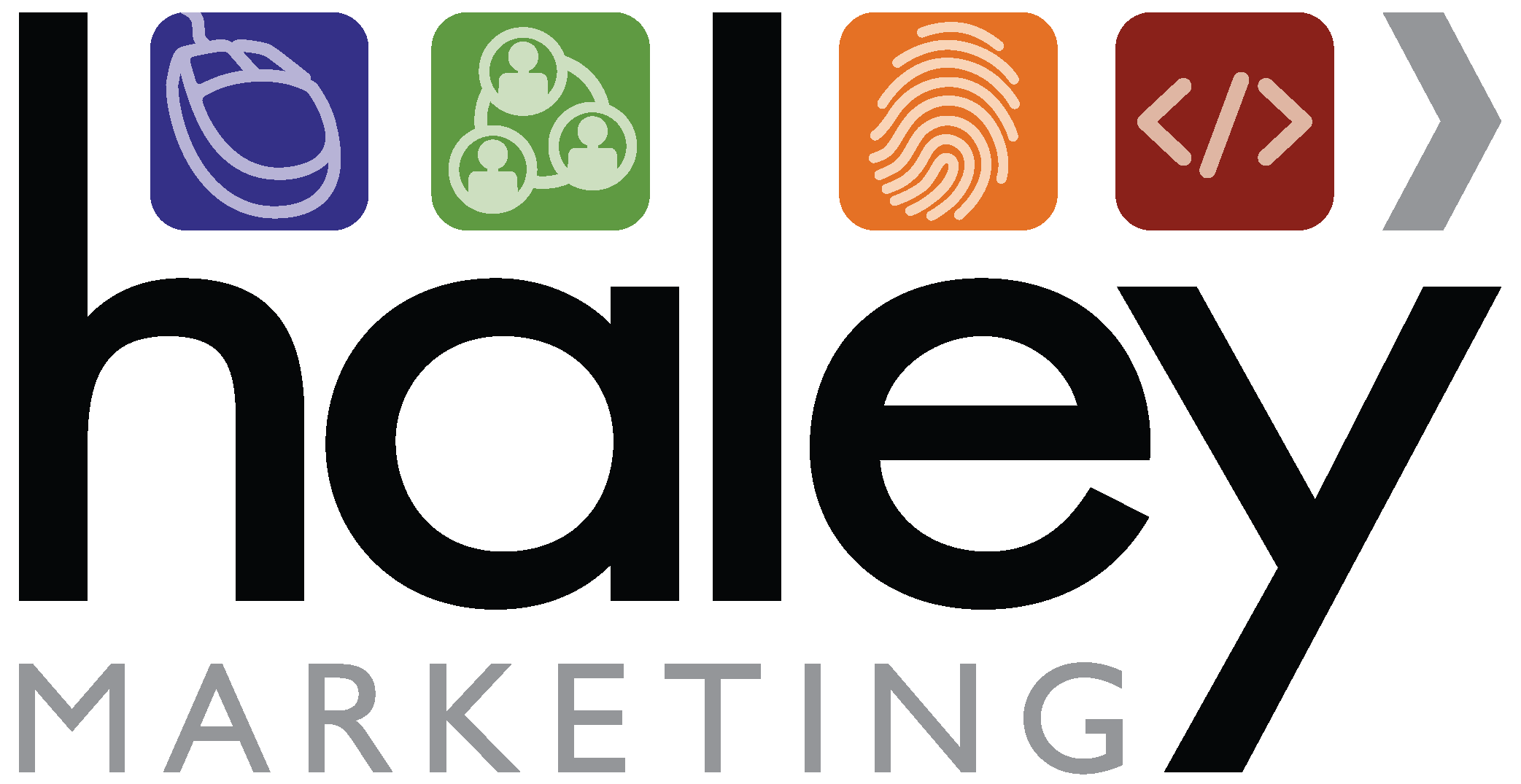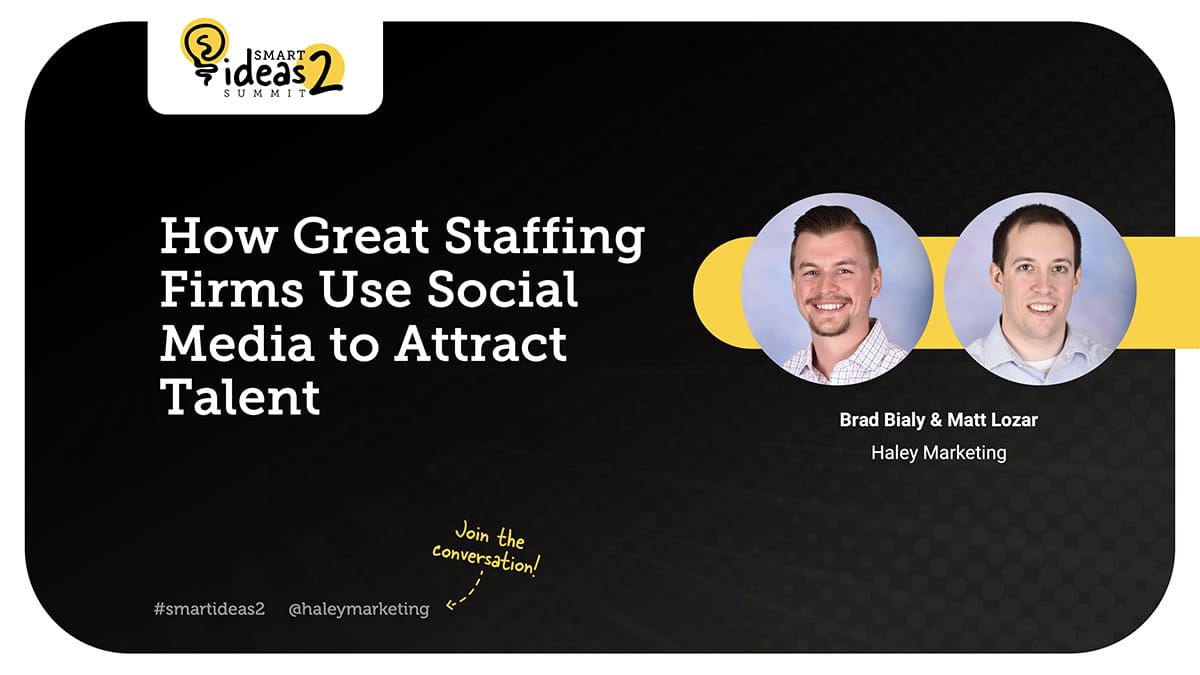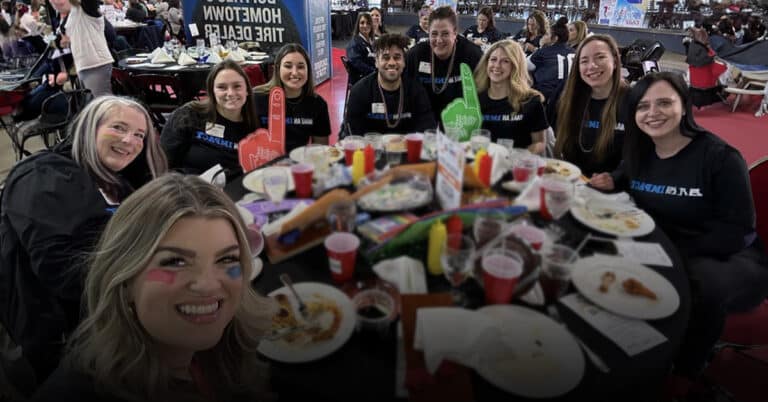The SMART IDEAS Summit 2 was a huge success! Thanks to everyone who attended and made the event a smashing success – we appreciate it.
Did you miss a session? Want to re-watch, or share a presentation with a colleague? You can!
The SMART IDEAS Summit 2 Content Is Available on Demand!
Access the free recordings and slides for 14 educational presentations from some of the smartest minds in staffing here. Just enter your contact information and then click on your session of choice to begin viewing.
Session Recap: How Great Staffing Firms Use Social Media to Attract Talent
In this presentation, Brad Bialy (Digital Marketing Manager) and Matt Lozar (Director of Recruitment Marketing) tell us about the ways the leading staffing firms leverage social media to attract top talent to their organizations.
Video Transcript
Brad Bialy:
We’re here today to talk about how great staffing firms use social media to attract candidates and great talent. Matt, I’m going to pitch it to you. Get us started. When you think about social media, when you think about recruitment marketing, when you think about employer branding on social media, what are the greats doing? What are the best staffing firms doing when it comes to social?
Matt Lozar:
There’s a lot there, Brad, and as we talk about a lot on Insights, I think it goes back to a lot of principles. It goes back to where’s your audience spending time? Your audience is obviously going to be a little bit different. If it’s healthcare, accounting, manufacturing, IT, whatever. And then what content will they engage with? And I also think it’s really important to know what the algorithm’s rewarding. So you can know where your audience is spending time, right? So we know where to go. We know what type of content they like to engage with; written, audio, video, mix and match. But then also, what’s the algorithm going to reward, which I think is really important?
Brad Bialy:
I agree. I think the best staffing firms, they’re being unique when it comes to social media. Time after time, we hear, “Oh, I want to be like Matt’s Staffing firm,” or, “I want to be like Brad’s Staffing firm,” or, “I see what they’re doing and I’m acknowledging that, and I want to be like that.” The best staffing firms are understanding that I can see what other people are doing, I can acknowledge that, I can learn from it, but then I can do it my own way, and I can put my own spin on things.
Along with that, I think the best staffing firms are looking outside of staffing and recruiting. They’re looking at what people are doing in entertainment, in sports, in consumer goods. And they’re saying, okay, what are the monsters of the world like Amazon doing to attract talent? What are the monsters of the world like the Buffalo Bills doing on social media and how can we captivate our audience in a similar way?
Matt Lozar:
I think the learning part is super important, because also staffing recruiting sometimes can be a little bit… won’t be at the cutting edge-edge of everything, but it starts to adopt what works well in other industries, and that’s an awesome benefit we’ve seen at Haley Marketing over the years in social media. Pick your example, TikTok right now; what’s working well there that you can bring to the industry? Or we look at sports and entertainment a lot. Reels are really, really big on Facebook, on Instagram, because it’s all what is rewarding. So I think the learning part of it in terms of what you see, how you engage daily, but then also what’s working, and how can you bring that to the industry?
Brad Bialy:
Yeah. And I think when you look at what other brands are doing and you look at what other people are doing, it’s good insight, and it’s a good way to learn from what’s going on in sports. Matt, we talk on our podcast, Insights, which is part of the Secrets of Staffing Success family, we talk about rockstar marketing every episode. And we talk about what lessons can we learn from companies and businesses and sports teams and bands, because we want to try to learn from that.
Matt, you talked about understanding what’s working for the algorithm. Talk to us about your test the other day, where you did a test post on LinkedIn only using text. I know it was something that you tested. We talked about it on Insights, but talk about it here on Smart Ideas too for us.
Matt Lozar:
It goes back to what I was talking about the algorithm rewarding. Recently, you see on LinkedIn, if you have a post that’s 100 words, 200 words, it’s getting a lot of push. Brad talked on it the other day. I looked at my last three actually from LinkedIn; they got 1,900 impressions each, which is a good amount.
Brad Bialy:
It’s a lot.
Matt Lozar:
If you go back to looking at… I was doing a lot of videos, Matt Minute videos a few years ago, almost a video every day or every few days. Those were getting a lot of impressions. We’d talk about it, and then Brad and I would literally sit down and be like, “What the heck? This isn’t working as much anymore,” because more people were doing it or our content wasn’t good, pick your choose. But that’s what’s really important is knowing what everything is rewarding, what people are engaging with, and knowing that. So I think that’s where that text post came in and really helped.
Brad Bialy:
And you only learn that through testing, right? So if you’re listening here and you’re thinking, well, I don’t have the time to drop a graphic post, to do a video post, to do a text-based post, to do Instagram reels, to try TikTok, to put out YouTube content, we get that. But what Matt’s alluding to is you can start somewhere. Everybody can start somewhere. And the analogy that we might use often is, you would never wake up today and say, “I’m going to go run a marathon,” if you’ve never ran at all in your life, but you might get off your couch and walk around the block. You might do that for two or three days. On the fourth day, you might run half of that. You might walk a little bit, run a little bit, walk a little bit, run a little bit until you build up that momentum, you build up that endurance, until finally you can run that marathon.
When we talk about testing on social media, think about that one thing that you can test this week. When you leave Smart Ideas 2 and you can try one thing, what is it? Is it a text post? Is it maybe putting out a piece of video content? Is it maybe sharing a top job or sharing some sort of alert? And Matt, we’re going to get to that in a second. What can you do? What’s that one thing that you can test this afternoon? Matt, real quick, talk to me about growing your employer brand on social media. You talk about employer branding. It’s got to be your biggest buzzword of 2022. We talk a lot about it on the social space. What are two things that we can do, keep it short, two things that we can do to grow and strengthen our employer brand across social media?
Growing Your Employer Brand
Matt Lozar:
I think the first thing is we have to know what our employer brand is. We got to know what we want to promote and be consistent, be authentic with it. You’ll hear that a lot in the recruitment marketing masterclass presentation… David and I are doing later today. But I think you need to know what you want to promote. What’s your mission? What’s your values? Why are people working for you? What’s that employer value proposition? So then you need to figure out the content you create across social media. I love testimonials. I love video testimonials. Or if somebody doesn’t want to get on camera, do some graphic testimonials, and it can be something as simple as, “Brad Staffing agency helped me get back on my feet” or, “Helped me with my second job,” or my first job, “Find a schedule that worked for my family,” Anything like that. So I think that’s really important.
And I also think the other thing with employer brand on social, it takes time. It’s not going to happen right away. You’re not going to go from two reviews to 100 reviews overnight. You’re not going to grow your audience by 1,000 people overnight. That’s where I think the consistency, the authenticity, find some tactics that work, but also understand it’s going to take time to grow that.
Brad Bialy:
Yeah, and Mark hopped in here and said he’s been seeing a lot of success from LinkedIn polls. Mark, you’re alluding to engagement drivers. So what are specific social pieces of content that you can share that drive engagement? On LinkedIn, it’s a poll. On Twitter, it’s polls, it’s asking questions, it’s doing something like, “Hey, if you’re showing up to an interview, would you wear this or that?” And doing some sort of fun engagement, driving content with your audience. A great way to drive engagement, drive response from your audience. And what’s secondarily great to that is once people start to engage with your posts, they’re going to see more of them. So you sprinkle in those engagement drivers, Matt clicks like, Matt shares it, Matt comments on it. Now Matt’s going to see the job that you post next Tuesday or next Wednesday. So it has that sort of inherent value down the line as well.
Matt, I love testimonials. I love making sure that everything’s unique to the brand. I love showcasing team members. I think if you are going to grow your employer brand, it needs to be authentically you, it needs to be unique to who you are and it needs to be profoundly you. Matt, go ahead, then I’ll just move on.
Matt Lozar:
Yeah, sorry. Speaking of the unique, walk us through a couple examples you’ve seen with our social product about making it local to cities, how you’ve incorporated geography or even company names into that brand.
Brad Bialy:
Absolutely. So if you think about you’re very local to Buffalo, New York, well, the greatest football team on the planet is playing this afternoon, this evening, right? And actually Matt, that’s a really good segue. Give me one second.
Matt Lozar:
This was not planned. He must be going to get something.
Brad Bialy:
All right. That feels a lot better. That feels a heck of a lot better. The greatest football team on the planet is playing this evening. So what are you going to do? Well, you’re going to post on LinkedIn that there’s a great contest at Haley Marketing, that if we get 65 more people to join Smart Ideas too, well, then Team Haley is going to start at 10 o’clock tomorrow instead at 8 or 9 o’clock, and that’s great, right? But that’s a great, great piece of content. Love all the Go Bills and Bills Mafia chatter right now in the chat too as well.
Matt, you think about adding in location. We have a client who’s super specific to the Cleveland area. So every Friday, they drop a post about what’s going on in their specific community that weekend. It shows that they’re a part of the community, that they’re not just doing business in Cleveland, but they’re doing business because they’re a part of Cleveland. And if you’re a staffing from very, very specific to a location, to a very specific area, well then we want to strengthen your footprint in that area, and we want to make sure that people see you as being true to Buffalo, New York, and being true to that location.
Matt, let’s talk about driving actual response from social media. That was a question that we got before the presentation and something that we wanted to make sure we touched on. How can I drive actual response? I’m posting across Facebook. I’m posting across LinkedIn. I’m posting on Twitter. I think people see it, but I’m not feeling applications, or I’m not getting any comments. I’m not getting any shares. How do you, Matt, recommend that we drive actual response from social media?
How to Drive Response From Social Media
Matt Lozar:
Let’s start with the goal. We always start with SMART goals at Haley Marketing. So Specific, Measurable, Achievable, Relevant, Time-bound. What’s the response we want, because it might be different? For me, it might be to get 100 applications every month. Or Brad, it could be, let’s get 50 job alert signups every week. Let’s think about what that’s going to be. It could be to grow our followers by 1,000 in the next six month months. What’s that going to be? And then we can get into it.
So if I want to drive all of that infer… all of those job applications, am I going to collect them right on Facebook? Am I going to use a Facebook lead generation ad, which we talked about a little bit earlier today? Am I going to drive people back to your website, to a landing page that actually has great information for someone to convert? So I think that’s where you need to really think about the actual response. Start with the goal, but then look at tactics that help you get to that goal, whether it’s an ad, if it’s just a sign up right on Facebook, those types of tactics.
Brad Bialy:
I love that; you got us back to goal setting, which is something that we talk about pretty much every day at Haley, something that we talk about quite a bit on Insights. When you think about driving actual response, Matt’s alluding to setting SMART goals, Specific, Measurable, Achievable, Realistic, and Time-bound. If you don’t have those five qualifications, you have a hope, you have a wish. Well, I hope we get more applications. I hope we get more candidates because of Facebook. Without setting a quantifiable, “I want to see 50 more applications by the end of the month for our specific opportunity,” you never know if you’re going to hit that goal, or if you’re just sort of hopeful, if you’re wishing for candidates.
Matt, we think about driving actual response, I would love to see very, very direct Facebook ads. I want to see LinkedIn ads. I want to see very deliberate, very, very deliberate action-based and action-oriented ads. I want ads targeting your candidates. I want ads that are surrounding your candidate database. I want ads that follow people that come to your website, re-marketing ads. I want to be in that candidate ecosystem. So when Matt Lozar, the candidate, comes to your website and then goes out to Facebook because he didn’t apply, he sees ads for Brad Staffing firm until he has to come back and apply. And friends, Amazon’s doing this. Your leading consumer goods like Nike or Under Armour, they’re doing it. We can do that in staffing and recruiting. The realization though, is that a lot of us aren’t, but we can. And if candidates… Matt, what’s the stat? How likely are… candidates are twice as likely to apply, repeat visitors?
Matt Lozar:
Returning website visitors, we’ve seen in the staffing industry, they’re going to convert twice as often as someone new, because it also works in consumer behavior. The trends carry over. You find a brand you like, you’re going to either continue to purchase it, or leave it and never come back again. But you build that brand affinity over time, and that behaviors carry over to recruiting.
Brad Bialy:
Yeah, so you want people to come back to your website. How are you going to do that? By running very, very targeted ads. We’re either going to target your candidate list. We’re going to target website visitors. We’re going to target career portal visitors. So if you have jobs on your website, putting an actual cookie and a tracker basically on their machine. So when they go out to a site like Facebook or they go to Google’s advertising network, they’re followed by your ads; they have to come back.
Matt, along with that, in terms of driving actual response from social media, we need to be deliberate, and we need to ask, and we need to tell people what it is that we want them to do. When you think about your own behaviors on a site like Facebook or LinkedIn or Twitter, you’re scrolling at 100 miles an hour, maybe you’re watching a TV show. You’re watching Jeopardy, or you’re watching a football game, or you’re watching whatever it might be, that second phone, that second device comes out because there’s a commercial. So organically, you’re just scrolling mindlessly until you have some sort of thumb-stopping imagery, or thumb-stopping message, or something that makes you… and you have to click it. So if you’re thinking, okay, well, how do I drive a response from social? We need to be deliberate. We need to ask for it. We need to be captivating with our copy, with our imagery. We need to make sure that we’re doing everything that we can to get people to take action. Matt, hit us with one more. What else can people do?
Matt Lozar:
Michelle actually mentioned it in the chat and I think it’s great, we see it a lot, Facebook groups can work really well. LinkedIn groups can work really well. Why? Because people join a group for a reason. Brad and I love to take care of our lawn; we’ve joined lawn care groups on Facebook.
Brad Bialy:
We sure do.
Matt Lozar:
We see a lot of content in our pages. You can join it. Registered nurses in Chicago, accountants in Seattle, something that could be just geographic-based, could be industry-based, and go in there and provide value, provide content. Don’t just dump jobs in there; provide insight into questions people could have. Jump in the conversation and build that content marketing, another way to do content, and just develop relationships, because it’s going to work in the end.
Brad Bialy:
Absolutely. Matt, we’ve got four minutes here. Let’s wrap it up. Where does social media fit into my company’s marketing mix? You go first, you got two minutes.
Matt Lozar:
It’s one tool in the toolbox. It’s something you can do. Obviously people are spending time on there. It’s continuing to change. When I started Haley Marketing seven, eight years ago, Facebook was really, really big. And now it’s really started to diversify to other platforms. So you have to figure out what platform works for your company, what works for your target audience, if it’s sale side or even recruiting side, and to try to look at that into your mix, it’s just one part of what you should be doing.
Brad Bialy:
I agree. I think social media is the glue for everything else that you’re doing. So if you have content on your website, well, you should be posting it through social media. If you have an integrated direct marketing campaign, that should be integrated into social media so that as candidates, or prospects, or whoever are getting tangible print mail, or they’re getting other emails, they’re also seeing similar related ads or related messaging on social. If you’re having an aggressive PPC strategy, we should also be running that PPC on social. If we have organic SEO, we should be targeting similar themes through keywords on social.
Social media to me is and always will be the glue to pull all of that together. And it’s also, in a lot of ways, the first step in to meeting somebody. Everybody, I mean 1.8 billion people are on Facebook. The world is using social media. So if we can be present, we can be active, we can be using all of these platforms, it’s the perfect glue my friend. Matt, a couple of questions came in, man. You want to answer those? David, I think we got two minutes here, right?
David Searns:
You guys are great on time. There’s a couple questions in chat, and there’s one in the question box. And I was just about to type a note, but I’ll say it verbally. If you have additional questions, use the Q&A, because then the chat, it kind of flies by. But in the Q&A, we get a list of everything you’d like answered. So you guys can start with the chat and then we’ll go to the Q&A box.
Brad Bialy:
Sure. I saw one about Reddit Matt, let’s start there. And I actually don’t have the window open. So Matt, if you want to read them, or David, if you want to, somebody just asked if there was any success from Reddit. I love Reddit. I will tell you that from a content planning standpoint, from a community standpoint, Reddit can be a massive rabbit hole of finding secondary things, whatever. But if you go into a very, very targeted sub-Reddit of resume tips, or career advice, or Buffalo, New York, and now you’re talking to only people in Buffalo, I love Reddit because of the communities that they’ve built. It’s basically Matt, a Facebook group on steroids. I love it.
Matt Lozar:
I don’t do too much with Reddit, but I know the one takeaway I have seen, don’t go in there and be fake. They sniff out selling very, very quickly. And I don’t know if they ban you or just down vote you. Whatever the term is, they will sniff out unauthentic people in there very, very quickly. So just join the conversation
Brad Bialy:
Down-vote, way to go there. I’m impressed that you knew that.
Matt Lozar:
Thank you. One question from Mary talked about, how do you get around the lack of targeting for employment ads on Facebook? That’s a good question, because Facebook, a few years ago, changed employment with a couple other industries to be limited in targeting for lawsuit purposes; we can’t violate employment law. So it’s a challenge and especially brought up one example about healthcare, which is probably one of the hardest to target. You can’t just go in and say, Buffalo, New York nurses. You have to build personas is one way.
So try to figure out what people have interest in. It could be Buffalo, New York. Obviously, you’re not going to be able to target on age or gender, anything like that. But look at different personas of what people could be interested in. Test, like we’ve talked about. Testing should be 10% to 20% of your budget. But then also, Brad talked about earlier, use some remarketing tools for people that visited your website previously. Upload your ATS list into Facebook as a meshed audience. Build a special ad audience so it can look at your database, compare it to the rest of Facebook and say, “Okay, these people are very similar characteristics. Let’s blow up your audience from 10,000 to 100,000 and serve your ads to those people.”
Brad Bialy:
I love that. I would just echo Matt’s comments there in terms of targeting your database. I think that’s the best thing you can do. These are people who already have somewhat of an idea of who you are. Let’s surround them with ads to bring them right back on home and apply again. Matt, you got any others there?
Matt Lozar:
There was one more. Is Facebook or LinkedIn more successful for most recruiters, agency seeking applicants? What is most popular in job seekers?
Brad Bialy:
I’m going to dance around it, but it’s indirect. I think it’s going to depend on industry. It’s going to depend on client. It’s going to depend on organization. It’s going to depend on who you’re trying to target. If you’re an executive recruiting and you’re only looking for C-suite executives, well then they’re always going to be on LinkedIn. Now the caveat to that is they’re also on Facebook. And I know David you’re listening in, why don’t you share that real quick story about how you were targeted by an ad on Facebook and it caught you off guard. I know you’ve said it in consulting before, but I remember you saying that it caught you off guard because you didn’t expect to be targeted by an ad that you would actually want to see on Facebook, right?
David Searns:
And it was more B2B, but it was… I spend far too much time, I think that… what do they refer to now, doom scrolling. But getting my news from Facebook and scrolling through, every fourth post is an ad. And I’m seeing advertisers very accurately looking for me by my interests. And then it’s usually software that I’m looking at and tools for social media marketing that are really well-targeted to the fact that I’m a marketing professional by career. People are doing a fantastic job in accurately finding people. To the question about Facebook versus LinkedIn, you nailed it on the difference, it could be by job skills or industries. We looked at IT professionals several years ago. We studied, we did a research project and what we found is more IT professionals were on LinkedIn than Facebook. Everyone had a LinkedIn account, but maybe only a third of them were on Facebook. But they used LinkedIn about once a month. They used Facebook, for those who used it, daily. So it’s not necessarily just where are the most people, but where are the most engaged people?
Brad Bialy:
I fully agree. We’ve got to be getting close to time. I know we’re at 1:22. David, we got time for a couple more questions or-
David Searns:
You’ve definitely got time for a few more. There was a good question about hosting events that kind of scrolled past, and that versus networking in person. What do you guys think about events related to social media and recruiting?
Brad Bialy:
Matt, you’ve tested those on Indeed, right?
Matt Lozar:
We’ve done some Indeed, we’ve done some Facebook, we’ll stick to social here. I think it’s a great way to get some word out. Facebook will definitely push them. It’s a great way to do that. And also anything you do with an event, especially on the recruiting side, don’t wait to follow-up with people. They might not show up. They might just want information. If you can get contact information, let’s say your event’s in two weeks and someone signs up eight days before, don’t assume they’re going to show up. Don’t assume they’re still going to be unemployed in eight days. Follow-up with them as soon as you can.
Brad Bialy:
Can we talk about that for a second? So I know we talked about, it was in the second session, we talked about making sure that we’re responsive with clients, making sure we’re responsive with prospects. Friends, it’s the exact same with candidates. If candidates are reaching out to you via Facebook Messenger and you’re not responding to them, their problem is not going away, their problem is moving to your competitor, and they’re waiting for somebody to get back to them as soon as they can. And again, just because you’re not getting back to them because you don’t have time, or you don’t check your Facebook messages doesn’t mean that Matt Lozar, the candidate is no longer looking for work. It means he went somewhere else and found somebody who does want to talk to them. So we need to be responsive with those messages. And that doesn’t mean checking them every two minutes, but at least every 24-48 hours, let’s go into Facebook messenger and make sure that we don’t have a graveyard of leads in our inbox there.
David Searns:
Hey guys, we’ll go a few minutes late on this one. Just make sure we’ll have time for Art to get on on time. But there’s some great questions in the Q&A. Let me ask you some of them. Kevin asked here, “I try to be consistent always, not just nine to five. How important is personal brand outside of work hours in your opinion?”
Brad Bialy:
We talk personal branding a lot on the podcast. We talk personal branding a lot at Haley Marketing. The issue isn’t so much about personal branding by time, it’s by making sure that you’re consistent and authentically you online and offline. I’m a die hard Bills fan, that’s why I’m wearing the Josh Allen Jersey during the webinar. I thought maybe we’d hop on early and not have it on, and throw it back on, but that’s who I am. And that’s who you’re going to get, whether it’s LinkedIn, or Facebook, or Twitter, that’s who I am and everyone here at Haley knows that.
What’s interesting though, is when you post, it doesn’t necessarily matter, unless we’re in something like entertainment or sports. Now the algorithms across social are going to favor quality content. All of them want quality. When does that change? If God forbid, there’s a tragedy in the world, if there’s a sports game in the world and everyone is talking about the Buffalo Bills in Buffalo, New York, now your feed is going to start to show more of that. If everyone is talking about the video music awards or the country music awards, your feed is going to start to show more of that because social media is saying, okay, this is happening. We need to show more people this messaging. So in terms of personal branding, it doesn’t matter necessarily when you post as much as what you’re posting and making sure that you’re adding value to the community. For me.
David Searns:
Awesome. Take another question, “How do you target mid-level to executive professionals on social media, especially on LinkedIn?”
Matt Lozar:
That’s hard now.
Brad Bialy:
Let me take that one.
Matt Lozar:
We’ll try. I think it goes back to Brad’s answer; what are you targeting? What’s their pain point? What do they have to consume? Because they’re probably getting hit with a lot of information in their feeds, they’re probably getting hit with a lot of unsolicited LinkedIn messages, the new cold call where I just get random people offering me B2B offerings in my LinkedIn email.
Brad Bialy:
Don’t do that. Don’t do that.
Matt Lozar:
That I’ve never talked to before. So I think you can target them with really, really good content. Go into LinkedIn groups, build your page. If you want to get into LinkedIn advertising, which can be hyper expensive, but if it’s worth it for you, try that out. So I think something even simple as a salary guide, am I making enough money? Am I not making enough money? Are we paying enough money? That’s a type of content that can help you reach those mid-level executive professionals. But I think we’ve talked about this internally a lot and David’s shared a lot with this; what’s keeping people up at night? What’s the challenge they’re trying to overcome. You can provide any type of insight into that, that will help.
Brad Bialy:
Yeah, and Matt, maybe just to paint a quick analogy too. You need to think about who your target audience is and that’s what Matt’s alluding to. And that’s what Matt’s speaking on. You think about the audience who reads Rolling Stone Magazine, the audience who reads Inked Magazine and the audience who read Better Homes & Gardens, all very, very unique and specific individuals. So the content for those individuals has to be tailored to them. If we’re talking about targeting those, I think it was mid to senior level executives, what do they want to hear about, in what industry? What’s going on in that industry? What is being talked about? What is the buzz in that space? You need to live in that space and understand that if you want to target them, you need to talk their language and you need to talk at a level that they want to be communicated with. Otherwise, they’re going to pass right by it.
David Searns:
Awesome. Thanks guys. Let’s see if we can sneak one more in, maybe two. “Any thoughts on Nextdoor as a recruiting platform?”
Matt Lozar:
I have not used nextdoor Amy, so I don’t know anything. Brad, have you used Nextdoor on the recruiting side or seen them that way?
Brad Bialy:
Nextdoor is like my ring doorbell, right? It tells me what’s going on in the community?
Matt Lozar:
I think so.
Brad Bialy:
Yeah. I haven’t ran any ads. We haven’t really explored it for Haley. Frankly, I didn’t know that you could. Though the more I think about it right now, it sounds intriguing because if it’s all going to be people who are in a 10-mile radius of Kenmore, New York and I’m hiring in Kenmore, New York, that sounds like a phenomenal, phenomenal way to get in front of the right people at the right time. I can’t speak on it from experience, but I’m intrigued by the idea.
Matt Lozar:
It sounds very regional. If your audience is spending time on there and you can build trust on there, it would work well.
David Searns:
Yeah, I’d say what surprises me, because I’m on the app, is that it’s… at least locally for us, the gloom and doom. It’s like everybody’s sharing bad news and maybe there’s an opportunity to share good news. It’d be a great place too to get recommendations from others, because it’s an endorsement-based community. All right, last quick question, I want to switch over, “Any tools that you guys recommend to gather quality video and photos from candidates?”
Brad Bialy:
Video Now from Haley Marketing, It’s got to be, right?
David Searns:
There’s your plug.
Brad Bialy:
Honestly, I say that kind of jokingly, but at the same time, it’s an incredible piece of software. You send out a link to a candidate, they click the button and from their smartphone, they’re now recording a video testimonial in seconds. We use it on our team to get testimonials. We use it on our team for new hires. I think we use it a little bit for Smart Ideas too, to get feedback from presenters on what they were talking about. I think that would be a great way to do it. You could also set up a real quick photo booth/wall in your office. And when people are… Matt finally got that assignment, take a real quick, 30-second video and get his candid feedback about how he feels about it. Matt, what do you think? Anything else?
Matt Lozar:
No, I think smartphones are so good with you don’t need a special camera. Grab a tripod, so we’re not standing on a boat, throw a quick microphone on there and just make it simple for people. Like Brad said, if it’s in the office, if it’s sending them a link, you could even jump on the Zoom. I’m sure if you had a high enough internet speed and quality, Zoom would be really good. So the tech is so available, I think it’s just making it really simple for people.
Brad Bialy:
Fully agree.
Want more smart ideas from the smartest minds in staffing?
Access the free recordings and slides for 14 educational presentations from the SMART IDEAS Summit 2.
